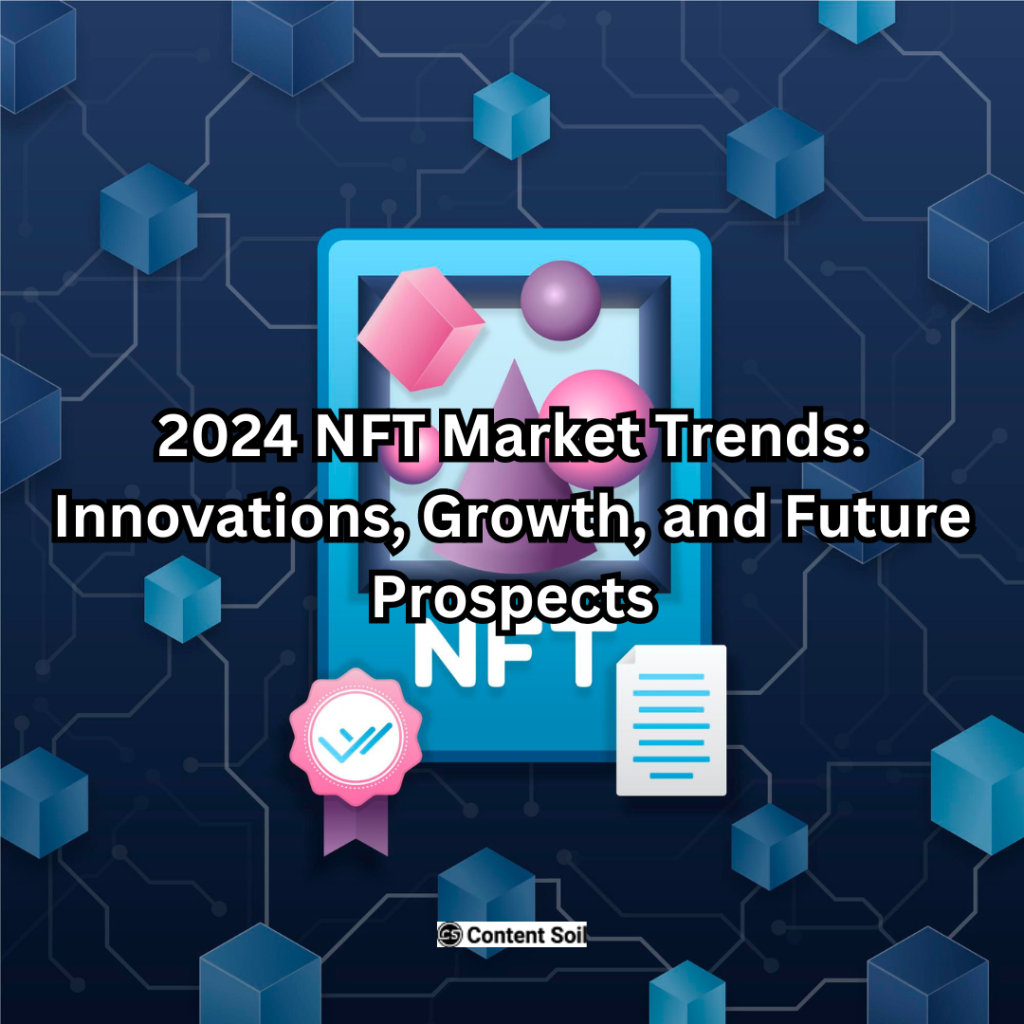Introduction:
The Non-Fungible Token (NFT) market has been on a roller-coaster ride since its inception, witnessing exponential growth, a period of stabilization, and now, in 2024, another phase of innovation and expansion. As digital assets continue to evolve, the NFT landscape is becoming more dynamic and multifaceted, influencing various sectors from art and gaming to real estate and fashion. This essay delves into the significant trends shaping the NFT market in 2024, exploring innovations, growth trajectories, and future prospects.
Technological Innovations
One of the most exciting aspects of the NFT market in 2024 is the continuous technological innovation driving the space forward. Several key advancements are contributing to the maturation of the market:
Layer 2 Solutions and Cross-Chain Interoperability:
Layer 2 solutions, which enhance the scalability and efficiency of blockchain networks, are becoming more prevalent. These solutions reduce transaction fees and increase transaction speeds, making NFTs more accessible to a broader audience. Additionally, cross-chain interoperability is gaining traction, allowing NFTs to be transferred and utilized across different blockchain platforms seamlessly. This development is fostering a more connected and versatile NFT ecosystem.
Smart Contracts and Dynamic NFTs:
The sophistication of smart contracts has led to the emergence of dynamic NFTs, which can change their properties based on certain conditions or external data. This innovation is opening up new possibilities for NFTs in gaming, finance, and beyond. For instance, a dynamic NFT in a game could evolve based on a player’s achievements, or an NFT representing a financial instrument could adjust its value based on real-time market data.
AI-Generated and Interactive NFTs:
Artificial Intelligence (AI) is playing a pivotal role in creating unique, interactive NFTs. Artists and developers are leveraging AI to generate artwork, music, and other digital assets that are not only visually stunning but also interactive and responsive to user inputs. This interactivity adds a new layer of engagement, making the ownership experience more immersive.
Market Growth and Expansion
The NFT market continues to experience robust growth, driven by several factors:
Mainstream Adoption and Institutional Investment:
NFTs are no longer a niche interest but have entered the mainstream consciousness. High-profile endorsements, celebrity involvement, and institutional investments are fueling this growth. Major corporations and financial institutions are recognizing the potential of NFTs as a new asset class and are actively investing in the space.
Expanding Use Cases:
The application of NFTs is expanding beyond art and collectibles. In 2024, NFTs are being utilized in various industries, including real estate, fashion, and entertainment. For example, real estate firms are using NFTs to tokenize property, allowing for fractional ownership and easier transfer of assets. Fashion brands are creating digital clothing lines that can be worn in virtual environments, blurring the lines between physical and digital fashion.
Enhanced Marketplaces and Platforms:
The infrastructure supporting the NFT market is becoming more sophisticated. Enhanced marketplaces and platforms are providing better user experiences, robust security, and diverse functionalities. These improvements are attracting a wider audience and facilitating more transactions, contributing to the overall growth of the market.
Future Prospects
The future of the NFT market in 2024 looks promising, with several key trends likely to shape its trajectory:
Regulation and Legal Frameworks:
As the NFT market matures, regulatory scrutiny is increasing. Governments and regulatory bodies are working on creating frameworks to ensure the legality and security of NFT transactions. While this may pose challenges, it also presents an opportunity to establish clearer guidelines, protect investors, and enhance the credibility of the market.
Sustainability Initiatives:
Environmental concerns have been a significant issue for the NFT market, given the high energy consumption associated with blockchain transactions. In 2024, there is a strong push towards sustainability, with many platforms adopting eco-friendly practices and exploring alternative consensus mechanisms like Proof of Stake (PoS) to reduce their carbon footprint.
Integration with the Metaverse:
The concept of the metaverse—a collective virtual shared space—is becoming increasingly intertwined with NFTs. Digital assets in the form of NFTs are essential components of the metaverse, enabling ownership and trade of virtual real estate, avatars, and other digital goods. As the metaverse grows, the demand for NFTs is expected to soar, creating new opportunities for innovation and economic activity.
Education and Accessibility:
Educating the public about NFTs and making them more accessible is crucial for sustained growth. In 2024, efforts to demystify NFTs and blockchain technology are ramping up. Educational initiatives, user-friendly platforms, and simplified onboarding processes are making it easier for people to understand and participate in the NFT market.
Community and Social Impact:
Communities play a vital role in the NFT ecosystem. In 2024, there is a growing emphasis on the social impact of NFTs, with projects focusing on inclusivity, diversity, and philanthropy. NFT creators and platforms are increasingly dedicating portions of their proceeds to social causes, leveraging the power of blockchain for positive change.
Conclusion
The NFT market in 2024 is a vibrant and evolving space, marked by significant technological advancements, expanding use cases, and a growing mainstream presence. As the market continues to mature, it will be shaped by regulatory developments, sustainability efforts, and the integration of NFTs into the metaverse. The future prospects of NFTs are promising, with immense potential for innovation and growth across various sectors. As we move forward, the NFT market is poised to redefine digital ownership, creativity, and the way we interact with digital assets.


